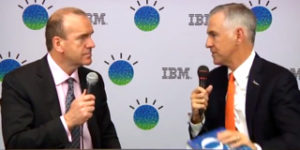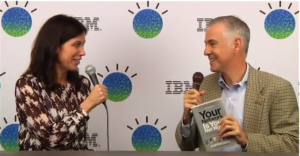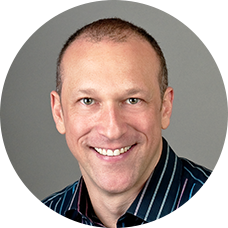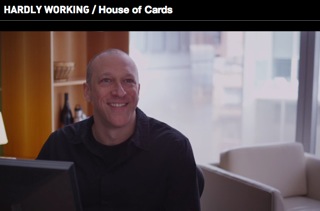 With the world abuzz about the newborn English prince George, it seems appropriate that I finally feature my interview with a real-life knight of realm, Sir Terry Leahy. Sir Terry was the CEO of Tesco, a company he helped build into a global retailing powerhouse. I caught up with him after his keynote address at the IBM Smarter Commerce Summit earlier this year where we discussed his new book, Management in 10 Words. Although this edited interview is longer than most of the ones I post, I expect you will find it well worth your time, since Sir Terry is one of a handful of CMOs who not just rose to the CEO position but also became one of the most effective in recent years.
With the world abuzz about the newborn English prince George, it seems appropriate that I finally feature my interview with a real-life knight of realm, Sir Terry Leahy. Sir Terry was the CEO of Tesco, a company he helped build into a global retailing powerhouse. I caught up with him after his keynote address at the IBM Smarter Commerce Summit earlier this year where we discussed his new book, Management in 10 Words. Although this edited interview is longer than most of the ones I post, I expect you will find it well worth your time, since Sir Terry is one of a handful of CMOs who not just rose to the CEO position but also became one of the most effective in recent years.
Drew Neisser: Simple is one of my favorite words in your book. But Simple is hard, especially for big businesses. Why is that?
Sir Terry Leahy: Yes, simple isn’t easy. But, it still is the right thing to do. I think it’s a mindset. You have to accept that as organizations grow, they will become more complex. So, you got to counter that by deliberately navigating in search of simplicity. As organizations evolve, they do so around a series of decisions. And it’s when you make those decisions, you have the opportunity to choose a more simple route, as oppose to a more complex route. And in a way we have to counter the way we all educated.
In education sometimes you’re rewarded for length. I was reminded of the old Mark Twain story when his editor asked him for two pages in two days. And he came back and said, no can do. I can do ten pages in two days. But it’ll take me two weeks to do two pages! And what’s that getting at is you have to think about it. You have to think about how you can actually simplify the way you deliver a product or a service to a consumer.
Drew Neisser: With all the big data that’s out there, does this make it harder to get to simple or does it make it easier?
Sir Terry Leahy: Well it potentially makes it harder. There’s a real danger that an organization can be flooded by data. And information can get in the way of actually accessing the things that really matter for the consumer and what will really drive your organization forward, if you make decision on those things. Our data is so complex now. So, powerful. It’s even a danger that it can become detached from most ordinary people. And that can be very harmful for an organization. You want data to be more accessible and to be placed right at the heart of the organization. Right where the decision are made.
Drew Neisser: How do you get to where data becomes simple?
Sir Terry Leahy: I think it became simple once we were able to know things about customers. That was the big breakthrough for us. We had product data with the [advent of the] bar code. Which transformed our retail industry. But, we didn’t know anything about the people who bought the products.
Once we launched Club Card that allowed us to gain information about those individual customers. And their shopping habits. What they bought when they shopped. And that really illuminated the world for me because then we knew more about how customers shopped and what they needed. And what they’re interested in. We could tailor [messages.] We could target our products our services to meet those specific needs.
Drew Neisser: One of the words that you used was Courage, which is another great word. I would use the word chutzpah but that’s because I live in New York. And a lot of companies don’t have the courage to make big bets. In fact, they sort of go for incrementalism. Talk to me about the importance of courage and big bets, and the risks of such an approach.
Sir Terry Leahy: Courage is an unusual word in the context of business. But, I think it’s at the heart of business. And in fact, I think entrepreneurs would understand that. They take the biggest bet of all with their livelihood, when they start a business. But, in an organization it still applies. Many people are fearful of upsetting their boss and affecting their promotion prospects.
Actually, you’ve got to be prepared to risk everything. Even your career in order to do what you think is right in a situation in the job that you hold. One of the big bets that I made was the launch of Club Card, which gave this information around customers. In order to do it, we had to incentivise customers. That was going to cost us at the time a quarter of our entire profits. If this had gone wrong, and many predicted it would go wrong, I was finished.
Drew Neisser: So, one of the things that really distinguishes you particularly in the world of big data and CTOs is that as a marketer, you became CEO. Why do you think you were able to beat the data guy to the CEO spot, and what could marketers who aspire to be CEOs, learn from that experience?
Sir Terry Leahy: Yeah, it is unusual. And I think we need more CEOs who come from marketing or come from technology. It happens obviously in the technology industry, but outside that industry, it’s pretty rare. And, I think that’s a great shame because those are the two most valuable commodities for business systems to work with–customers and data knowledge. I was able to use Club Card and some other innovations to be the voice of the customer in the business. So, I was able to give leadership for the company from the marketing position. And that, therefore, was a small step into the CEO office.
And I think other CMOs can do that. I think that they can step forward and lead the business from the marketing position. Particularly, if they harness the customer. And the customer is the biggest power base within an organization. And if you use it in the right way, it’s hard for [a colleague from] Finance or Operations to challenge the voice of the customer. If you have the customer on your side, you’re the most powerful guy (or woman) in the organization.
Drew Neisser: Interesting. So, one of the words that’s not on your ten words, is the word intuition. And in this world of big data does intuition still have a role?
Sir Terry Leahy: I think it does. You read the psychology books like I do, and they look at how the brain works and what would probably happen is that we’ll all be better at absorbing data about the things that we work on and work in. And then we’ll have an intuitive response that seems like a gut instinct.
But, actually it’s drawing on all of that data. All of that information that you’ve been putting in there over the last weeks and months and years. And largely, that’s probably the right way for it to come. A combination of the two sides of our brain, if you like. And that’s how most people will work.
Drew Neisser: Let’s get back to the CMO for a moment. How does that CMO who’s not a data person, make sure that they are looking at the data or getting the data they need to really inform their strategies?
Sir Terry Leahy: I think the days of the CMO not being data person are passed. I don’t think you [the CMO] have to be a math genius. The technology right now is making [data] so much more accessible. It’s about the CMO who’s curious about the world around them and how they use data to inform them about that world. And that’s what CMO’s are naturally are. Their naturally interested in people. Interested in how the world works. And they just need unlock data to inform their decisions.
Drew Neisser: One of the words in your book is “Values.” Let’s talk about that. Every company that I know has values. They put them on their website. They put them on a wall in the kitchen. But, they’re not realized. They’re not activated. They’re just platitudes. How did you make sure that the values that you established for Tesco became a real part of the organization?
Sir Terry Leahy: I think you have to look at the organization. And you’ll find in the history of the organization or in the narrative of the business the core values. And if you can draw those out and articulate them and build on them, I think that’s a much more solid foundation. I think after that it’s — you obviously have to live those values. People will listen to what you say, but they’ll watch what you do. Integrity comes from a consistency between the words and the deeds.
And you’ve got to live it every day. It’s incredibly powerful in business as in any institution or organization. The foundation are a code of values that says this is what we’re here to do. And in any situation, this is how we’ll behave. And people can identify with them. It’s so much easier for people to sign up for that.
Drew Neisser: One of the words you have in the book is, “Compete.” When some companies see what their competition is doing, they try to replicate it. How do you compete and look at your competition, but make sure that you remain true to yourself?
Sir Terry Leahy: What’s interesting in the first ten years of my career, essentially I copied the competition because our competitors in my industry were outstanding firms. The best in the country. Arguably the best in the world at what they did. So, I didn’t have to look far for ideas. I just copied them.
But, what I found was as we got closer and closer to this benchmark, we could never overtake them because, you know, if you just like the original people will always choose the original. And it was only, when I stop copying the competition and started following our own customers and letting they be my lead, that we overtook them within a year.
It was an amazing thing that I learned. From that day forward I respected and learned everything I could from the competition. But, I never followed competition. All the focus was on the customer. And then what you did was much more original. Much more authentic. And customers spotted that you were doing it first and doing it for them. You weren’t doing it because some other competitor did it first.
Drew Neisser: To wrap up here, let’s talk about the future. If you were training now for the CMO job ten, fifteen years on the horizon, what would you be focused on?
Sir Terry Leahy: Well, I think it’s a really exciting time now because back when the Club Card started, Tesco was one of the first in the world using data, as soon as computers were powerful [enough.] Now, the opportunity to access data from social networks, from shopping data and from so many other things, from operations, it’s without limit. And, yet, organizations don’t use that data. They don’t bring it in and use it to inform the way products are developed, to drive the direction of the business. So, I think that still is the opportunity. How do we make business decisions on the basis of knowledge–knowledge of the world around us.




